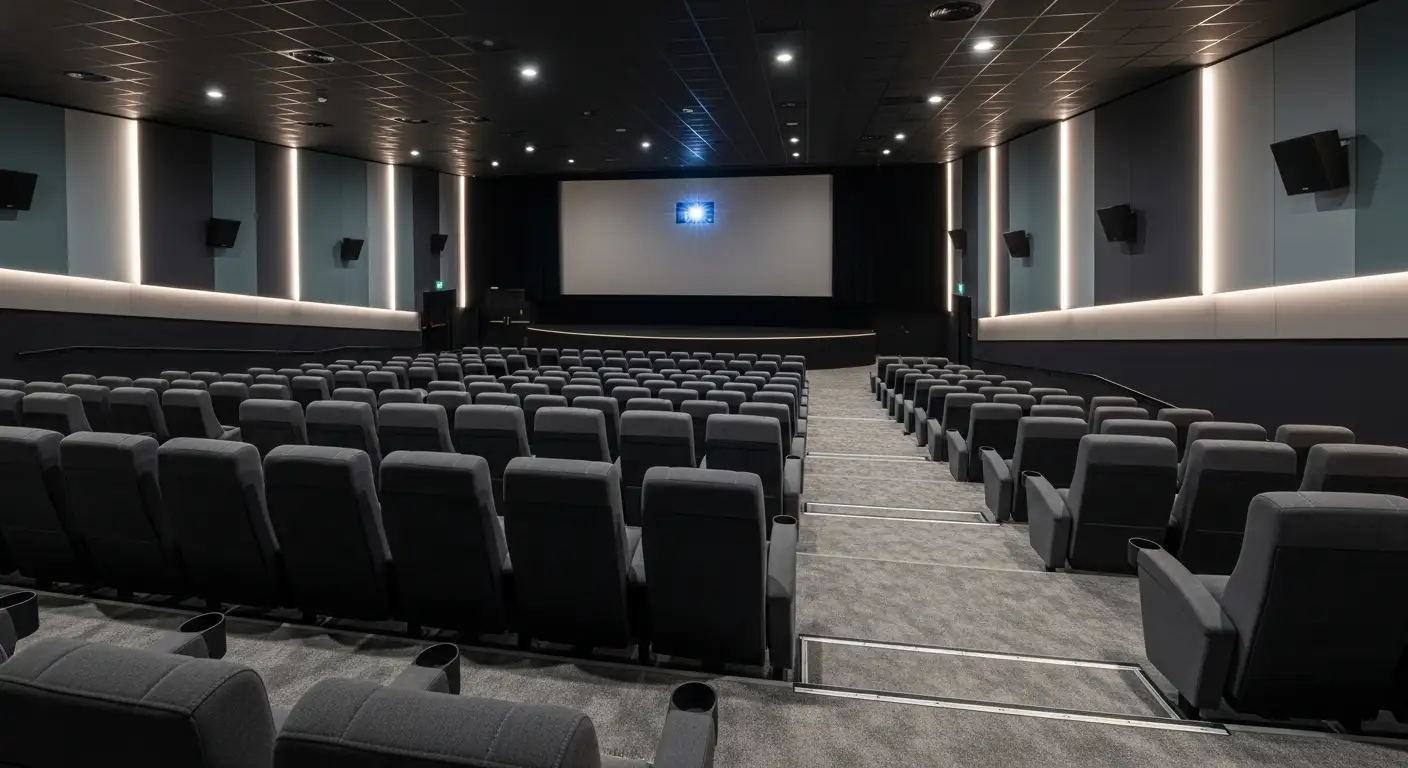Music Therapy And Autism
Unlocking Developmental Opportunities Through Therapeutic Sound
Music therapy has emerged as a valuable, evidence-based approach to support individuals with autism spectrum disorder (ASD). Rooted in the natural affinity many autistic individuals have for music, it offers a personalized means of enhancing communication, social skills, emotional regulation, and sensory processing. This article explores the core principles, techniques, benefits, and scientific outcomes of music therapy in the context of autism treatment, highlighting its evolving role within comprehensive care plans.
Understanding Music Therapy for Autism and Its Principles

What is music therapy for autism and what are its main principles?
Music therapy for autism is a clinical, evidence-based approach that uses musical interventions tailored to individual needs to improve various developmental and behavioral challenges associated with autism spectrum disorders (ASD). It harnesses the universal language of music—incorporating singing, playing instruments, improvisation, songwriting, and listening—to facilitate communication, social skills, emotional regulation, and sensory integration.
The therapy operates on the principle that musical activities can activate brain regions involved in language, emotions, and motor functions. This activation supports neural connectivity and neuroplasticity, which are essential for skill development and behavioral change. Techniques such as rhythmic patterns, melodic tones, and multisensory stimuli are employed to capture attention, foster self-expression, and promote social interaction.
Group and individual sessions are designed to encourage joint attention, social engagement, and empathy, all critical skills for social integration. Music therapists assess each person’s strengths and challenges, designing personalized programs that combine active participation with passive listening, based on what is most effective for the individual.
Research supports that music therapy can play a significant role in improving communication, reducing challenging behaviors, and enhancing emotional well-being in autistic individuals. It is often integrated with other interventions in multidisciplinary care settings, making it a versatile and promising tool in the developmental support for people with ASD.
Techniques and Activities Used in Music Therapy for Autism
 Music therapy for autism employs a wide range of interactive techniques and musical activities designed to improve social communication, emotional regulation, and sensory integration.
Music therapy for autism employs a wide range of interactive techniques and musical activities designed to improve social communication, emotional regulation, and sensory integration.
Common activities include singing, instrument playing, improvising, songwriting, and listening to music. These activities are tailored to meet individual needs, allowing therapists to set specific goals and regularly assess progress. For example, singing can help enhance speech and language skills, while improvisation encourages spontaneous expression and social interaction.
Playing instruments and engaging in musical improvisation foster body awareness, coordination, and responsiveness. Songwriting activities enable children to express feelings and develop language skills creatively. Listening activities, which can be passive or active, are used to improve auditory processing and sensory perception. Some approaches, such as the Tomatis method, involve structured listening programs aimed at auditory integration, though scientific evidence varies.
Music therapists, trained professionals with specialized skills, modify these techniques according to the individual’s developmental level and sensory sensitivities. The therapy often involves engaging sessions that make learning fun and motivating, enhancing skills like shared attention, emotional expression, and social engagement.
In practice, these methods can be incorporated into daily routines at home or school, such as creating personalized playlists or encouraging musical games. The combination of active participation and attentive listening helps foster communication, alleviate anxiety, and promote overall emotional wellbeing.
Overall, the versatility of music therapy activities makes it a valuable complementary intervention for supporting social and communication development in autistic individuals, often in conjunction with other therapeutic methods.
The Benefits and Outcomes of Music Therapy in Autism

How does music therapy benefit individuals with autism?
Music therapy offers a wide range of benefits for individuals with autism, targeting various aspects of development. It enhances communication skills by activating both hemispheres of the brain, which can improve language processing, speech, and nonverbal interactions, especially for those who are nonverbal or have speech delays.
Moreover, music therapy helps children and adults process sensory input, which is often challenging for autistic individuals. The rhythmic and multisensory qualities of music create organized, predictable experiences that support sensory integration.
Relaxation and reduction of anxiety are significant benefits, contributing to emotional regulation. Engaging in shared musical activities fosters social interaction and bonding, providing alternative avenues for communication nonverbally.
Activities such as singing, playing instruments, improvising, and songwriting are tailored to individual needs, guiding development across behavioral, social, psychological, physical, sensory-motor, and cognitive functions.
By focusing on strengths and interests in music, therapy can help reduce challenging behaviors, promote self-expression, and encourage emotional well-being. Overall, music therapy is a structured, evidence-based intervention that supports learning, social connection, and emotional regulation among people with autism.
Protocols and Practical Applications of Music Therapy in Autism

Are there established protocols for applying music therapy to autism?
Yes, there are well-defined procedures and guidelines for applying music therapy specifically to individuals with autism spectrum disorder (ASD). These protocols are highly individualized, taking into account the unique needs, developmental levels, and preferences of each person.
Most treatment plans incorporate structured musical activities such as improvisation, song-based interventions, and active music-making with instruments. These activities are designed to foster social interaction, communication, emotional regulation, and sensory engagement.
Assessment tools play a crucial role in shaping personalized therapy. Clinicians use standardized instruments and observational methods to evaluate skills across multiple domains like communication, social behavior, and sensory responsiveness. This helps in setting clear, attainable goals for therapy.
Interventions are systematically adapted over time. For example, initial sessions may focus on increasing joint attention and response to musical cues, gradually progressing toward more complex social and verbal skills. Techniques like family involvement, positive reinforcement, and session structuring ensure engagement and effectiveness.
Music therapists, who are specially trained and credentialed, employ evidence-based practices, combining live improvisation with pre-recorded materials. They often work in various settings such as schools, clinics, hospitals, and community centers, tailoring activities to the environment.
Research supports these protocols, with ongoing clinical trials and systematic reviews validating their outcomes. The goal remains to maximize functional communication, social connection, and emotional well-being through consistent, engaging, and personalized musical experiences.
The Role of Music Therapy in Supporting Children and Adults with Autism
 Music therapy offers a versatile and effective approach for aiding individuals with autism spectrum disorder (ASD) across different age groups, including children and adults. Its application is tailored to meet individual needs, making it suitable for those with varying levels of functioning and sensory sensitivities. Therapists assess each person’s skills and design personalized programs that integrate interactive musical activities such as singing, instrument playing, improvisation, and songwriting.
Music therapy offers a versatile and effective approach for aiding individuals with autism spectrum disorder (ASD) across different age groups, including children and adults. Its application is tailored to meet individual needs, making it suitable for those with varying levels of functioning and sensory sensitivities. Therapists assess each person’s skills and design personalized programs that integrate interactive musical activities such as singing, instrument playing, improvisation, and songwriting.
In children, especially those with high-functioning autism, music therapy can significantly enhance communication and social skills. Given that many autistic children have innate musical talents or preferences, therapists leverage this strength to foster verbal and non-verbal expression, improve joint attention, and facilitate social interaction. For example, shared musical activities can serve as a safe and engaging space for children to practice turn-taking, responding, and emotional regulation.
Adults with autism also benefit from music therapy, which can support emotional expression, reduce anxiety, and improve social engagement. Sessions often incorporate familiar songs, group activities, or improvisational music to promote interaction, boost confidence, and develop sensory integration.
Furthermore, music therapy is frequently integrated with other interventions like behavioral therapy or sensory integration techniques. Combining approaches can amplify benefits, such as reducing challenging behaviors or supporting transitions between activities. For instance, calming playlists or rhythm-based exercises can help manage stress or sensory overload.
Real-life case examples underline these benefits. Rosie, a non-verbal girl, developed vocal sounds into spoken words through tailored musical activities. Ewan and James improved their social interaction by sharing rhythmic dialogues, while Sanjeev used music to regulate sensory overload and ease transitions. Such stories illustrate music therapy’s capacity to foster meaningful development regardless of age.
Overall, music therapy’s adaptability makes it a valuable tool in supporting those on the autism spectrum. Its focus on strengths, combined with ongoing research, continues to expand its role in helping individuals achieve improved social, communicative, and emotional outcomes.
A Melody of Hope and Progress in Autism Care
Music therapy offers a promising, adaptable, and engaging avenue for supporting individuals with autism spectrum disorder. Its capacity to enhance communication, social interaction, and emotional regulation, backed by growing scientific evidence, positions it as an integral component of comprehensive autism interventions. Moving forward, continued research, standardized protocols, and increased awareness will help maximize its benefits and ensure more autistic individuals can enjoy the enriching power of music in their developmental journeys.
References
- [PDF] American Music Therapy Association Fact Sheet Autism/ASD
- Music therapy and autism | Raising Children Network
- The effect of music therapy on language communication and social ...
- Study protocol of a randomized control trial on the effectiveness of ...
- Music Therapy for Autistic People - AAFP
- Music Therapy for Autism: A Parent's Guide
- Music Therapy for Children With Autistic Spectrum Disorder and/or ...
Other articles
Recent articles

Cultural Perspectives On Autism Around The World

Autism And Creative Arts As Emotional Expression Tools

Developing Emotional Regulation Skills In Autistic Teens

Best Sensory-Friendly Lighting Solutions For Autism

Cognitive Behavioral Therapy Adaptations For Autism

Best Practices For Autism-Friendly Movie Screenings

Autism And Eating Challenges Beyond Picky Eating

Best Practices For Autism-Friendly Public Transport Design

Best Ways To Foster Collaboration Between Parents And Schools For Autism Support

Supporting Autistic Children During Transitions Between Activities

The Role Of Teachers In Fostering Autism Peer Acceptance

Using Art Therapy To Support Children With Autism

Autism And Strategies For Addressing Sensory Defensiveness

Autism And The Benefits Of Structured Leisure Activities

How To Support Autistic Students During Exam Season

Autism And Goal Setting For Personal Growth

How To Use Gamification In Autism Learning Programs

How Schools Can Reduce Bullying Of Autistic Students

Early Intervention Strategies For Autism Spectrum Disorder

The Role Of Therapists In Autism Life Skills Coaching

How To Support Autistic Individuals In Crisis Situations

Autism And Self-Care Routines For Stress Management

Understanding Echolalia And Its Role In Autism Communication

Autism And Fine Arts Education Benefits

The Impact Of Multisensory Learning On Autism Education

How Family Counseling Supports Autism Household Dynamics

Best Practices For Inclusive Playgrounds For Autism

Best Practices For Autism-Friendly Shopping Centers

How Autism Affects Fine Motor Skill Development

Best Ways To Introduce Sensory Activities Into Daily Routines

How Sports Teams Can Be Inclusive Of Autistic Players

Autism And Strategies For Building Workplace Resilience

Autism And The Impact Of Hormonal Changes During Puberty

How To Support Autistic Students In Foreign Language Classes

Best Ways To Teach Money Skills To Teens With Autism

Supporting Siblings Of Children With Autism

Autism And Co-Occurring Gastrointestinal Disorders

The Role Of Art Projects In Autism Sensory Integration

How Schools Can Incorporate Sensory Break Spaces

Best Practices For Autism Sensory Regulation At School

Autism And Strategies For Teaching Organizational Skills

Understanding The Relationship Between Autism And Anxiety Disorders

Autism And Life Planning For Long-Term Care

Exploring Visual Supports In Autism Education

Ways To Encourage Social Interaction In Children With Autism

The Connection Between Autism And Dyscalculia

The Role Of Occupational Therapy In Transition Planning For Autism

The Role Of Physical Therapists In Autism Motor Skills Support

How To Teach Decision-Making Skills To Autistic Young Adults

The Connection Between Autism And Epilepsy

Best Practices For Transitioning Autistic Children Into New Schools

Autism And Time Management Challenges In Adulthood

The Role Of Visual Arts In Autism Communication Development

How To Address Tactile Defensiveness In Autism

Best Practices For Telehealth Autism Therapy

How To Help Autistic Children Develop Friendship Skills

How Schools Can Support Autistic Students In Career Prep

Best Strategies For Autism-Friendly Event Planning

Understanding Noncontingent Reinforcement In Autism Behavior Plans

How Drama Therapy Benefits Autistic Individuals

Best Practices For Autism-Friendly Fitness And Recreation Centers

Best Ways To Promote Healthy Social Media Use For Autistic Teens

How To Help Autistic Children Cope With Public Speaking

Autism And Strategies For Managing Unexpected Changes

Best Podcasts About Autism For Parents And Educators

Autism And The Impact Of Seasonal Changes On Behavior

The Role Of Diet In Managing Co-Occurring Conditions With Autism

Sleep Challenges In Autism And Practical Solutions

Best Ways To Build Daily Routines For Autistic Children

Best Practices For Supporting Autistic Entrepreneurs

Autism And Strategies For Navigating Large Social Gatherings

Adaptive Sports And Recreational Activities For People With Autism

Autism And The Benefits Of Story-Based Learning Activities

Understanding The Role Of Play In Autism Development

Autism And The Impact Of Environmental Noise On Learning

How To Create Autism-Friendly Community Spaces

Autism And Chronic Health Conditions: What To Know

The Role Of Care Managers In Autism Life Planning

How To Teach Social Boundaries To Autistic Children

How Autistic Individuals Experience Empathy Differently

How To Support Autistic Employees In Remote Work Settings

Autism And The Relationship Between Motor Skills And Learning

How To Create Community Resource Guides For Autism Families

How To Teach Daily Living Skills To Autistic Teens

Autism And The Impact Of Mind-Body Practices On Stress Reduction

Autism And The Benefits Of Outdoor Group Activities

How To Create Autism-Friendly Sensory Paths In Schools

Best Practices For Autism-Friendly Park And Recreation Areas

Autism And Strategies For Reducing School Refusal

Supporting Autistic Individuals In Public Speaking

The Role Of Diet In Managing Autism Symptoms

The Benefits Of Gardening Clubs For Autism Social Development

How To Prepare Autistic Children For Dental Visits

Autism And Employment: Career Paths That Work

Best Practices For Autism-Friendly Hotels And Lodging

The Impact Of Screen Time On Autism Development

Autism Screening Tools For Early Childhood

The Role Of Physical Exercise In Autism Therapy

Best Strategies For Supporting Autistic College Students

The Role Of Technology In Autism Early Detection
We’re All About You, Your Family, and Your Child

